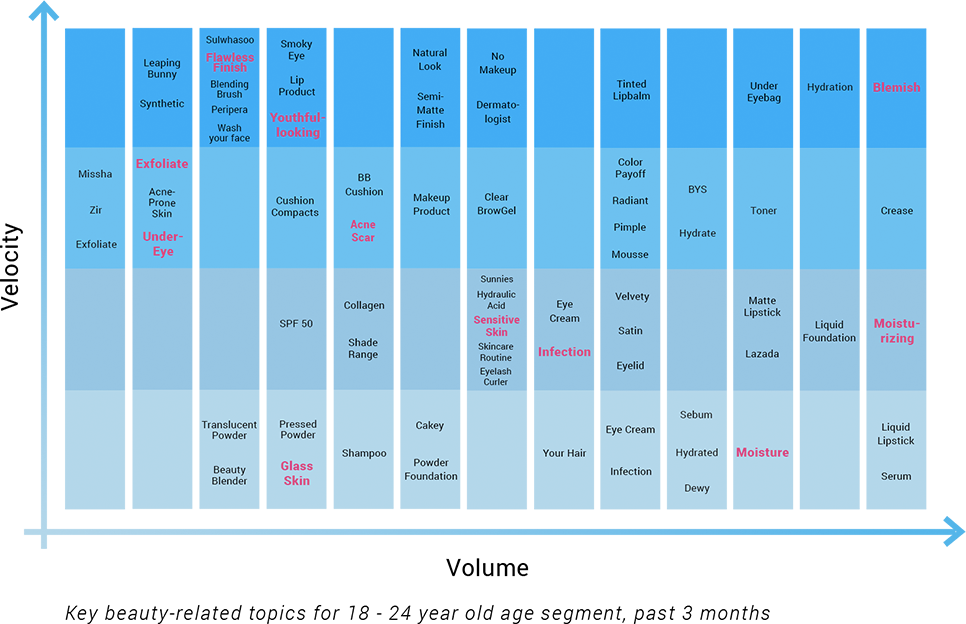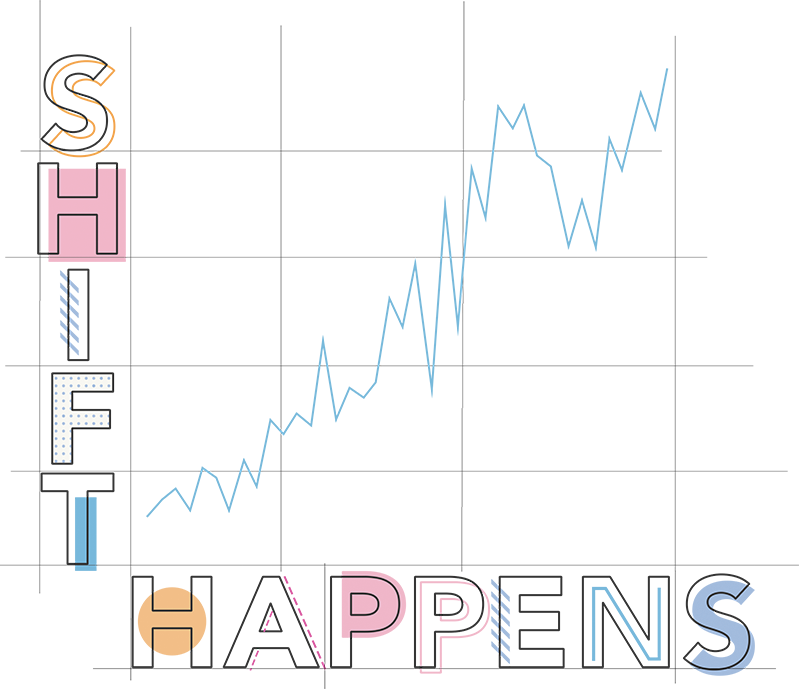How shifts in the consumer landscape shape today’s trends
As 2020 dawns upon us, marketers’ mailboxes are undoubtedly getting filled with not just trend retrospectives for the decade that was, but with trend predictions for the decade that is to come. But what if your company can get a handle not just on what will hit in the coming year, but go deeper than that? What if you knew the indicators of what makes a trend?
It would be possible, then, not only to manage and use these for your brands, and not only to study and determine what fad to ride on or personality to share equity with. When you know these “Trendicators,” you will also be able to see the bigger picture of how the consumer landscape is shifting. In doing so, a brand can go deeper into the consumer mindset and lifestyle, and even have a bit more control of the shape-shifting phenomenon called the future.

How customized can you be for your customers?
THEN: ONE SIZE FITS ALL
The Third Industrial Revolution (also known as the Digital Revolution) had been in full swing since the 1970s; but even then, product manufacturing was still largely defined by the mass production model popularized nearly a century earlier during the Second Industrial Revolution.
What this meant was that up until a few years ago, factories would churn out hundreds of thousands of the same product at a time in order to minimize production costs, consequently minimizing product price.
In turn, bespoke products became associated with affluence due to the steeper price tag needed to generate a return of investment on production costs.
Mass market products were then marketed to everyone (soaps and shampoos commonly made use of familial imagery in order to communicate household use) or as multi-use (Who can forget Sonny Padilla’s ‘90s TVC for Family Rubbing Alcohol --“Hindi lang pampamilya, pang-isports pa!”?).
The internet boom did not help much at first, either — until the creation of targeted advertising (beginning with ad exchanges in 2005), online advertising was still above-the-line in nature, covering a broad audience using more-or-less universal communications.
NOW: NUANCED NECESSITIES
The content renaissance brought with it not just more content from more channels; it brought more content from more channels from more people. Whereas traditional media such as print and TV flaunted the lives of celebrities and other tastemakers, the rise of Web 2.0 allowed everyday Filipinos to share their experiences.
With this came the understanding that people lived different lives and experienced different problems that no universal cure-all could resolve.
Rather than force-fitting products designed for a different target market, Filipinos learned to adapt to, or even embrace their own quirks.

Since 2007, Google searches for “best ____ for ____” had been steadily increasing before coming to a head in 2013. Searches were largely related to facial or skin concerns, but sometimes also extended to haircuts and even apps for specific operating systems.
Similarly, trends for morena and plus size have also been increasing since 2011, with related searches pertaining to products and / or services specific to their skin color or body type.

And while brands have begun to successfully capitalize on this by creating more targeted segments, consumers themselves have been taking matters into their own hands by searching for the ingredients that best fit their nuanced lives.
Trendicator in Action: Made for Myself
Recently, brands have begun to create targeted solutions for targeted problems and needs — use this variant of shampoo if you’re experiencing hairfall, use that variant of shampoo if you have color-treated hair; shop clothes from this sub-brand if you want to go for the “boho” look, shop clothes from that sub-brand if you want to go for the “corporate” look.
And no one is more supportive of this than younger Filipinos, whose consumption behavior indicates a top-down information search — given a problem or a desired outcome, what are the recommended solutions? For example, when reading about skincare, these consumers read content predominantly about skin problems like acne or oily skin.

Offhand, while this suggests a preference towards “specialized” product bundles, this can also point towards a strategic learning process: study topics large-scale before delving into more specific content.
From skincare to travel, some internet users -- usually younger ones -- preferred to read more cursory content such as listicles that gave them the low-down on broad topics such as a skincare paradigm (e.g. K-beauty) or a travel destination (e.g. Japan).

Trendicator in Action: Did It Myself
On the other hand, another effect of product customization is that consumers can now demand to be given the components to be able to tweak products for themselves, rather than purchase a premade solution to their needs and problems.
For example, once a mainstay in a Filipino’s out-of-the-country trips, searches for travel agencies have been on the decline since 2006, with a large chunk of its search volume now coming from visa inquiries rather than inquiries on package tours or excursions.

Recent online consumption data indicates that Filipino travelers in general now go for a more “pick and mix” option, singling out tourist spots to go to, e.g. Nara Park or Hakone, and opting instead to commute on vacation rather than traveling with other tourist groups by bus.
This DIY habit is also apparent in many beauty and skincare enthusiasts, who are now growing increasingly more concerned with the ingredients list of the various facial products they use to best help optimize their skin.

Brands capitalize on this new behavior by asking their consumers what specific components they want to see in their next product or service:
“[Brands like Krave Beauty] ask people ... what key ingredients you want, hyaluronic acid, AHA, BHA, do you prefer mineral sunscreen or chemical sunscreen.” - Dominic Tan, Summer International
And this doesn’t apply to just big-ticket spends like travel, or long-term commitments like skincare; sometimes, Filipinos may want to customize something as mundane as their everyday coffee or tea.
Rather than just looking for brands like Starbucks and Alishan, consumers are also looking for specific ingredients and techniques such as drip coffee maker and ground coffee bean -- now, whether or not they’re studying to make it for themselves, or out of curiosity about what’s in their product is another question altogether.
“With Boomers also, they’re easily fascinated with new technology. Collagen and aloe vera [are novel ingredients that], if you present new ingredients to them with new benefits, [they’ll think,] ‘What, may ganun na pala?’” - Cara de Jesus, Summer International
- As your brand tries to offer something relevant to the current wants and needs of this emerging consumer, does it do it in a way that is markedly more delightful and differentiated versus competitors?
- Do you help them achieve what they have determined as their desired end - in the way they want it?
- Or - do you help them do things themselves and give them that sense of accomplishment to boot?



